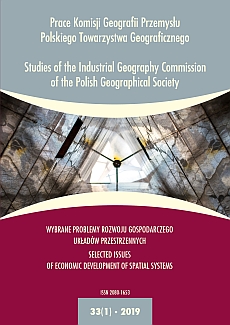Tourism as One of Factors of Regional Development of the Department of Vaucluse in South-Eastern France
DOI:
https://doi.org/10.24917/20801653.331.14Keywords:
France, regional competitiveness, regional development, tourism industry, tourism in socio-economic developmentAbstract
The aim of the article is to present tourism as the main factor influencing development of the region of the small department of Vaucluse in the southeast of France. The success of development of this realm is influenced mainly by tourism competitiveness of this region in comparison to other regions, which in this part of France unusually full of attractions (the region of Provence, the Alps, the French Riviera) is a difficult challenge for small communes. However, communes being part of the Vaucluse department such as Orange, Awinion, Gordes, or Vaison-la-Romaine skillfully use their economic potential thanks to recreational, entertainment, or even sport tourism (Malaucene at the foot of Mont Ventoux). Preparing statistical data included in annual summary statements, literature review and author’s individual observations allowed to present modern approach to the use of tourism in economic development of the area. In the analysis of Vaucluse tourism industry capability among others hotel infrastructure, recreational attractiveness and average duration of stay were analysed. The article presents also the most important aspects influencing tourist attractiveness of Vaucluse, as well as indicates main destinations of tourists from Europe but also beyond.Downloads
Metrics
References
Chiffres clefs du Tourisme Vauclusien 2017 (2018, 10 października). Pozyskano z http://vaucluseprovence- attractivite.com/observation-touristique/
Dorocki, S., Zdon-Korzeniowska, M., Delekta, A. (2012). Atrakcyjność turystyczna regionów na przykładzie Francji. Annales Universitatis Paedagogicae Cracoviensis Studia Geographica, 3, 7–25.
Dorocki, S., Brzegowy, P. (2013). Rozwój przemysłu turystycznego departamentów Francji zamorskiej w warunkach światowego kryzysu gospodarczego. Przedsiębiorczość–Edukacja, 9, 136–160.
Głuszczuk, D. (2011). Istota rozwoju regionalnego i jego determinanty. Ekonomia = Economics, 5(17), 68–80.
Januszewska, M., Nawrocka, E. (2015). Wpływ turystyki na rozwój lokalny. Prace Naukowe Uniwersytetu Ekonomicznego we Wrocławiu, 379, 23–31. DOI: 10.15611/pn.2015.379.02
La fréquentation touristique (2018, 10 października). Pozyskano z http://vaucluseprovence-attractivite.com/observation-touristique/
Le tourisme en Vaucluse (2018, 10 października). Pozyskano z https://www.insee.fr/fr/statistiques/ 3303636?sommaire=3353488&q =tourisme
Łazarek, R. (1999). Ekonomika turystyki. Warszawa: Zakład Wydawniczy DrukTur.
Markowski, T. (2008). Teoretyczne podstawy rozwoju lokalnego i regionalnego. W: Z. Strzelecki (red.). Gospodarka regionalna i lokalna. Warszawa: Wydawnictwo Naukowe PWN.
Projet de stratégie Vaucluse 2025–2040 (2018). Pozyskano z http://www.vaucluse.fr/fileadmin/ user_upload/pdf_docs/e_cadre_de_vie/Vaucluse_2025-2040/STRATEGIE-22.09.17.pdf
TGV France (2018, 10 listopada). Pozyskano z https://en.oui.sncf/en/tgv-france-brussels
Downloads
Published
How to Cite
Issue
Section
License
Articles are published under the terms of the Creative Commons License (CC BY-ND 4.0; Attribution– NoDerivs).

